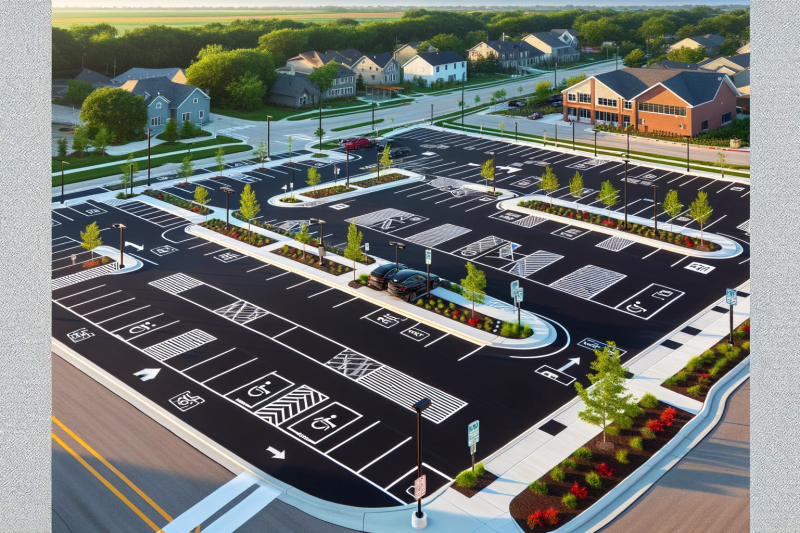Creating a perfectly paved parking lot involves several key elements that ensure its functionality, durability, and aesthetic appeal. A well-designed parking lot is crucial not only for the convenience of its users but also for the safety and efficiency of the traffic flow. Here’s a guide on what a perfectly paved parking lot should look like:
1. Smooth and Well-Leveled Surface
- Uniformity: The surface should be uniformly smooth, without any bumps or irregularities. This ensures a comfortable driving experience.
- Drainage: Proper slope and drainage systems should be in place to prevent water accumulation, which can lead to surface damage and pose a hazard to vehicles and pedestrians.
2. High-Quality Paving Materials
- Asphalt or Concrete: These materials are most commonly used due to their durability and ability to withstand heavy traffic.
- Proper Thickness: The thickness of the pavement should be suitable for the expected load to prevent cracking and potholes.
3. Clear and Durable Markings
- Parking Spaces: Clearly marked spaces, including designated areas for disabled parking, ensure efficient use of the area.
- Traffic Flow Indicators: Arrows and lane markings guide drivers safely around the parking lot.
4. Adequate Lighting
- Safety and Visibility: Good lighting is essential for safety during night-time or low-light conditions.
- Energy Efficiency: LED lights are a popular choice for their longevity and lower energy consumption.
5. Effective Signage
- Directional Signs: These help in navigating the lot, especially in larger complexes.
- Informational Signs: Speed limits, no-parking zones, and pedestrian crossings should be clearly indicated.
6. Landscaping and Aesthetics
- Green Spaces: Integrating landscaping elements can enhance the visual appeal and also aid in managing stormwater.
- Harmony with Surroundings: The design should complement the surrounding buildings and environment.
7. Safety Features
- Speed Bumps: To control vehicle speeds, especially in areas with high pedestrian traffic.
- Barriers and Bollards: These can protect pedestrians and critical infrastructure from vehicle damage.
8. Accessibility
- ADA Compliance: Ensuring accessibility for people with disabilities is not only a legal requirement but also a best practice in inclusivity.
- Pedestrian Walkways: Clearly defined walkways keep pedestrians safe and traffic moving smoothly.
9. Maintenance Plan
- Regular Inspection and Repair: A maintenance schedule helps in identifying and fixing issues like cracks or faded markings promptly.
- Resurfacing and Sealcoating: Periodic resurfacing and sealcoating can significantly extend the life of the parking lot.
10. Environmental Considerations
- Permeable Paving: This can help in recharging groundwater and reducing runoff.
- Heat Reduction: Using lighter-colored materials can reduce heat absorption, mitigating the urban heat island effect.
In conclusion, a perfectly paved parking lot is a blend of technical precision, aesthetic considerations, and thoughtful planning. It should cater not only to the immediate needs of vehicle parking but also consider long-term durability, environmental impact, and user safety and convenience.



No Comments
Be the first to start a conversation